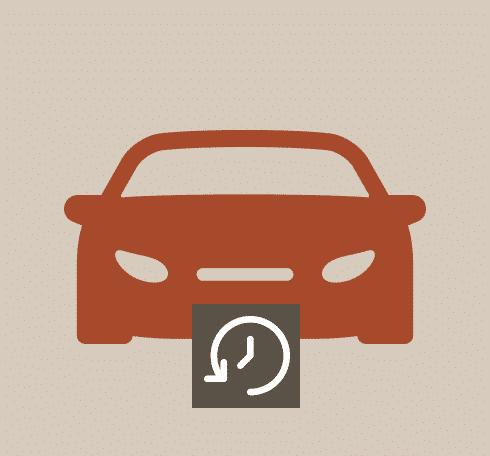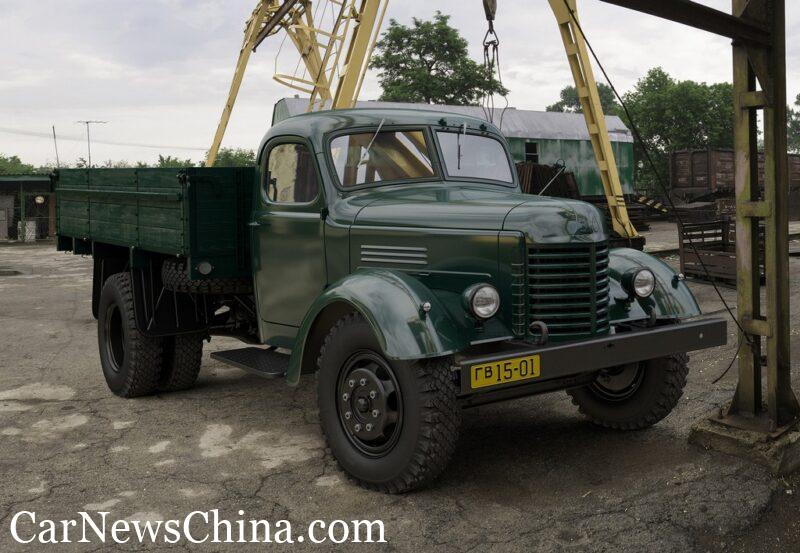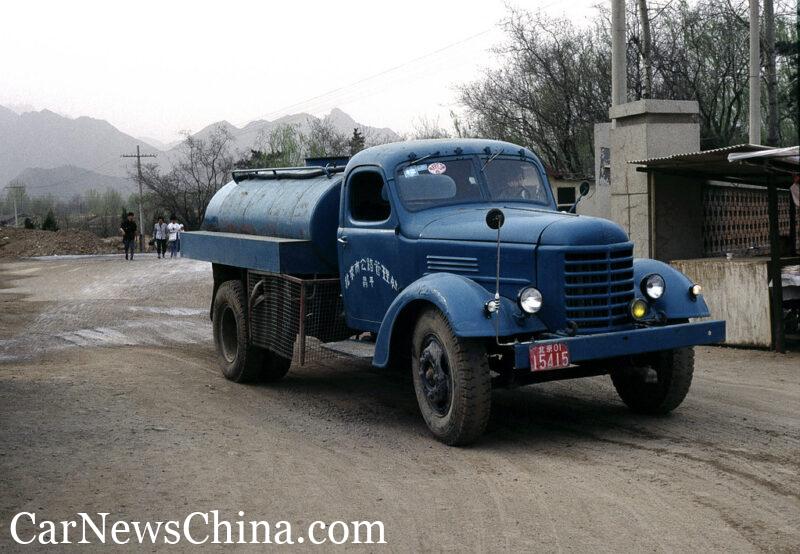The Big Read – FAW (1/5) – China’s first car manufacturer
One has to be the first and in China that is FAW. Of course, some cars have been made in the country before, but formally FAW is the first car manufacturer. The name reflects this status, the abbreviation means First Automobile Works.
Trucks and limousines
In the years immediately following the Communist takeover, China still maintains close ties with the Soviet Union. The Russians are therefore assisting the new Chinese rulers in all sorts of areas. In the late 1940’s a Chinese delegation visits Russia to familiarize themselves with the current car industry standards and find a helping hand. The Russians provide the design of one of their trucks, the ZIS 150 and make it available for production in China. In 1951 the Chinese Government approves the founding of a car factory and on July 15, 1953 construction of a factory starts in Changchun (Jilin province in northwest China). On the same day First Automobile Works is established as a state-owned enterprise.
The factory is finished in 1956 and the production of trucks starts. The first model, a copy of the ZIS 150, is called Jiefang (“Liberation”) CA10. This is a 4-ton truck, powered by a 6-cylinder gasoline engine of 95 hp. FAW soon also starts developing two passenger cars, which were presented in 1958. The first is called Dongfeng (“East Wind”) CA71, the second Hongqi (“Red Flag”) CA72.
The Dongfeng is a mixture of European influences. The chassis and the drive train are taken from a Mercedes 190 (Pontoon-model), and for the car body design resembles the Simca Vedette. The car actually enters into production: in 1958 and 1959 FAW builds around 30 units. Chinese leaders however decide that Shanghai Auto, which had presented a similar model with the Fenghuang, will produce the middle class sedans.
The same government decision appoints the production of upper echelon limousines to FAW, so its Hongqi model, a nearly six-meter long limousine, is cleared for take-off. Based on a Chrysler Imperial, the CA72 is the traditional sedan we know from the old images with Chinese dignitaries. In 1976 the still slightly larger CA770 supersedes it, but technically things staymore or less the same. In the course of time the CA770 appears in many different variations and car stays in production virtually unchanged until 1981. I’ll come back to this story later on.
First we return to trucks, because when it comes to numbers, this is FAW’s core product. Where the CA770 comes off the assembly line by dozens per year at most, the CA10 truck first does thousands and later tens of thousands of units annually. FAW’s cumulative truck production passes 1 million vehicles in 1983. By then the total Hongqi production had not exceeded a few thousand cars.
In the early sixties FAW starts work on a successor to the CA10. However, it will never produce this truck. At the time, the relationship between China and Russia deteriorates quickly The central government believes that, from a strategic point of view, the production of important resources should be spread across the country. Part of the FAW staff is therefore put to work to realize a second car factory. A factory is built in Wuhan (Hubei, central China) and completed in 1967. It’s appropriately named Second Automobile Works (SAW). FAW does not own or control the new plant, it’s a separate, state-owned entity. Later on, this factory will be known as Dongfeng.
Production of the FAW-designed successor to the CA10, the CA 140, is assigned to SAW. This means that FAW will continue to make the CA10 for another two decades. It is not until 1986 that their own successor, the CA141, is launched on the market. It is difficult to understand why it takes so long FAW to renew its model line-up without tying the company events to the general history of the country. The same understanding is required to interpret the complicated composition of the later FAW conglomerate, so we now have to take a little political detour.
A short history of communist China
After the Communist victory in the civil war in 1949, leader Mao Zedong realises that China is a poor and underdeveloped country, which can in no way compete with the rest of the world. Naturally he thinks that should change. The construction of the FAW plant foreshadows his campaign known as the Great Leap Forward. This campaign aims to transform China from an agricultural economy into a modern, industrialised economy. The campaign starts in 1958, but two years later the disastrous consequences already become apparent. All kinds of poorly managed enterprises, making low-quality products, have been hastily set up at the expense of the agricultural sector. What follows is economic downturn and famine. Some of that companies established during the Great Leap Forward make cars or car parts, and we will encounter several of them in other Automaker Stories.
With the failure of the Great Leap Forward, Mao loses much of his political standing and has to leave important functions to others. People like Zhou Enlai and Deng Xiaoping step in to fix the biggest mistakes and get China back on track in the mid sixties. Mao spends his time developing his vision of communism, resulting in the well-known Little Red Book.
Around 1965 Mao believes the time has come to put his ideas into practice. He manages to increase his political power again and ensures the loyalty of the army. Under his renewed leadership, his second campaign, called the Cultural Revolution, starts in 1966. This campaign is aimed at completely eradicating anti-communist, counter-revolutionary and traditional Chinese ideas that still exist in society and achieving a classless, communist society according to the virtues of the Little Red Book.
The Cultural Revolution is possibly an even greater disaster for the country than the “Great Leap Forward”. It leads to years of political infighting, riots, revolts, retaliations, massacres and economic stagnation. But assured of the military support, Mao perseveres and the misery continues until his death (from illness) in 1976.
Then the big turnaround for the country begins. After Mao’s death, his radical supporters lose out and power falls to far more pragmatic leaders. The new main man is Deng Xiaoping, who may clean up the mess once again. He does that diligently. He initiates fundamental economic reforms, including experiments with capitalism, and the direct influence of the army on many companies is greatly reduced and later mostly eradicated. With these reforms, Deng lays the foundation for the successful China we know today.
The Cultural Revolution has a major impact on companies like FAW. There are strikes and riots all the time. Also, capable managers are replaced on political grounds by Mao loyalists, who owe their jobs only to their political affiliation. And the classless society means that there is no longer any room for elites, such as engineers within FAW. Those engineers move from the drawing board to the workshop with the result that R&D comes to a complete standstill. So there’s your answer why FAW takes twenty years to design a new truck.
There’s a good example of some of the difficulties during the Cultural Revolution, that has the Hongqi car as main character. The initial design of the CA770 model has three red flags on the side representing “Mao’s General Line, Great Leap Forward and People’s Commune”. Beijing Mayor Peng Zhen suggests that FAW change it to one big flag representing “Mao Zedong Thought”. When Mao identifies Peng as an enemy of the state, the single-flag design becomes the basis for one of Peng Zhen’s criminal charges and evidence that he had attacked “Great Leap Forward and People’s Commune”. Jia Yanliang, chief designer at Hongqi and responsible for adopting the single-flag design, is expelled from FAW for many years.
And if all sections of society are in disruption, money will become tight. At the end of the 1970s, the Chinese car industry is therefore on the brink of collapse. The volumes are minimal (roughly half of ten years earlier) and the products dated. However, Deng’s reforms are reinvigorating the industry. The organisational structure of companies like FAW are being changed so that they can operate as real companies. Not a government committee, but a corporate board makes the decisions.
A good example is the abolition of the planned economy. The trucks made by FAW in the 1970s are supplied to one customer: the federal government. The government then distributes the trucks to the authorities and companies that need them. This practice runs on fixed prices and quantities. If FAW makes more cars than agreed, they end up somewhere in a parking lot. It leads to an extensive shadow economy, in which FAW exchanges a production surplus on the black market for, for example, extra raw materials such as steel. There is even smuggling to other countries. It’s of course not a tenable model and it Deng gets rid of it in the 80s. FAW (and also Dongfeng) are driving forces behind this change.
Corporate beginnings
How the newly acquired freedoms in the field of entrepreneurship are handled, differs from company to company. FAW chooses a way that we see more often with the Chinese car manufacturers: they start to buy up their entire production chain. Until about 1980, a company like FAW was dependent for the supply of parts and all kinds of production processes on an endless amount of often small companies, over which they had no influence. Those businesses were mostly controlled by a local government and therefore followed the interests of the government, not those of FAW.
In 1982, FAW establishes a subsidiary called Jiefang United Automotive Industry Corporation with the aim of bringing all major suppliers under direct influence. In the remainder of this article I will focus on the auto-making companies, but we are talking about hundreds of companies and small businesses. Jiefang United goes on a buying spree and purchases the influence and resources to become a large, professional car builder. All those hundreds of companies now fall under the umbrella of FAW.
Jiefang United is renamed in 1992, from that moment the company is called China FAW Corporation and manages all car-making operations of FAW. The parent company, formally still First Automobile Works, is also renamed to China FAW Group Corporation. The car group is their main activity, but the parent company also has many other investments in digital technologies, financial services, a travel agency and real estate.
After the shutdown of Hongqi in 1981, FAW could have dropped the brand altogether. But it choose not to and even explores every possible opportunity to revive the nameplate. It finds an ally in Volkswagen, whose Shanghai plant lacks the capacity to build Audi’s and refers to FAW instead. Hongqi production restarts in 1988 with the Audi 100 and soon after FAW and VW establish a joint venture.
That joint venture signifies FAW’s foray into passenger car mass production. For a while Hongqi sales flourish, now the cars are available to the general public. But just as quickly the brand drops back to the smaller numbers it’s used to. One of FAW’s acquisitions, Jilin Light Vehicle, starts producing cars on the other end of the spectrum: cheap minivans. In 2002 FAW forges a joint venture with Toyota and in 2006 with Mazda. The latter leads to introduction of FAW’s own mainstream car brand Besturn not much later. It does take another decade before the revival of the Hongqi brand gets in gear.
With Volkswagen and Toyota in its portfolio FAW obviously is among the largest passenger car manufacturers of the country. But in essence it’s still a truck maker, the Jiefang brand being number one among the commercial vehicles for as long as one can remember.
What to expect
In the diagram below you can see FAW Group is a huge and complicated conglomerate and then I only listed the main automotive activities. In the coming weeks I’ll guide you through it. Although CarNewsChina is about passenger cars, you can’t do an Automaker Story about FAW without commercial vehicles. That’s on for next week. Don’t worry, there will be some passenger cars too. In part three we pick up the Hongqi story and the FAW Volkswagen joint venture. Part four deals with Haima, Mazda and FAW Besturn and the final episode will be about Xiali and Toyota.
Read more Automakers Stories
Every week we publish one exiting article about history of famous Chinese Automakers. Check the ones you haven’t read yet.















